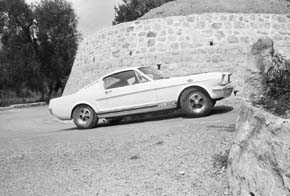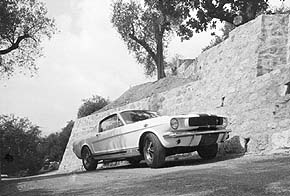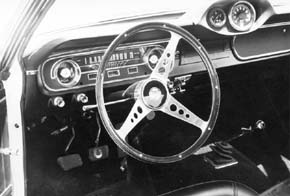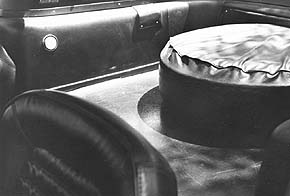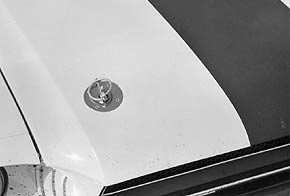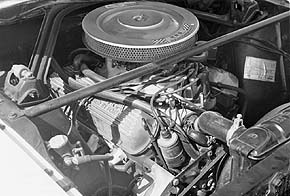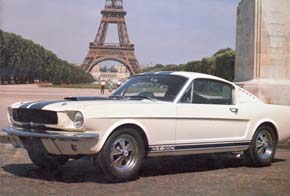|
Home About us History of the First 1965 GT350; 5S003 1965 GT350 unique parts 1965 GT350 Mustang "By the Numbers" Literature and Memorabilia Shelby American employee stories Original owners stories Other 1965 GT350 stories Forums Links |
Shelby American Employee Stories (Updated: 7/13/21)Since the beginning of 2004, I have been actively trying to gather stories from the former Shelby American employees; 1962-1970. I have had the privilege of working with Bob Shaw, who put together the Former Shelby American Employee Directory and is in charge of heading up the Shelby American employee reunions. Something tells me it was a little different working at Shelby American in comparison to being at the large Ford or Chevrolet factories. In the future, I hope to display some of the stories I run across that will give a sense as to what it was like to be at Shelby American in 1965. I am working on a layout of the 1965 GT350 production line, so one can follow where and how the modifications were performed on the cars. These people deserve a spot on this website all for themselves, for without them, the GT350's would not have turned out like they did. These are the rare stories, enjoy. "My most memorable drive? I had to deliver Carroll's personal GT350 from LeMans down to Modena in Italy after the race. It meant driving across France and then over a really wild-ass alpine pass to descend down into Italy. The Autoroute del Sol had just opened and it was fun to run at 120+ for miles as there were no speed limits then. Great car! "
My work title at Shelby American was "Quality Control" for the 1965 GT350 Mustangs. My job consisted in driving each one of the freshly completed GT350's out of the streetcar hanger to our test track located behind the concrete blast walls. You can see these large blast walls in the aerial photos of Shelby American; they are located directly West of the plant. Shelby's office was located on the northwest corner of the plant, the blast walls blocked his view of our "test track" on the other side. The quality control drive for each new GT350 consisted of me driving the car behind the blast wall and then doing two laps around our track. Occasionally, I would pitch a GT350 up onto the angled blast wall, driving it up on the wall. After the laps were completed, I drove the cars back and parked them in nicely formed rows (I am sure you have seen those photos too) so that they would be ready for shipment. From that point, I would walk back to the end of the production hanger where there would be another car waiting for me to take on its quality control drive. I did this all day long. I don't think I missed a day of work in 1965, so chances are I drove almost every street 1965 GT350 produced. I worked at Shelby American from 1965-1968.
I worked as a fabricator at Shelby American on various projects. I will never forget the day Chuck Cantwell pulled me aside and said there were some people from Ford arriving soon and we needed to show them what we had in mind for the new model year (1966) GT350. Chuck told me he would like to see what a GT350 would look like with a window in the place of the quarter panel vents. I told him that I thought the vents looked great and that they should be left alone (remember this was a new body style for 1965). Chuck told me he wanted quarter windows put in and if I didn't do he would find someone else to fill my position. Well I wasn't too happy about that, so I reluctantly removed the outer vents and the interior parts as well. When the vents were removed there were some metal supports in the way which would have blocked the view through the soon to be windows, they had to be removed. To vent my frustrations, I grabbed a ball peen hammer and knocked the metal supports out. It was not a very clean way to do it. I hand formed the inner window with some really nice, thick material and it took me quite a while to make the outer trim section in just one piece, not two pieces with the little clips you see on the rest of the cars. I still liked the vents, but after I was done I thought my results turned out pretty good. One day Chuck came downstairs with a couple of people with him (from Ford), they looked the car over for just a few minutes, nodded their heads, then walked off. Chuck later returned and said the people from Ford liked what they saw and that for the new models all will have these quarter windows, but we'll use royalite for the material on the inside of the widows. I told Chuck, Why are we going to use that cheap, thin crap? Chuck said it was an issue of cost. I told Chuck if you are going to use that junk on these cars, I'm gone. Chuck transferred me over to see Carroll Smith who was heading up the GT40 project; I later designed the adjustable rear spoiler on the GT 40 MK IV.
Return to top of page |
|||||||||||
